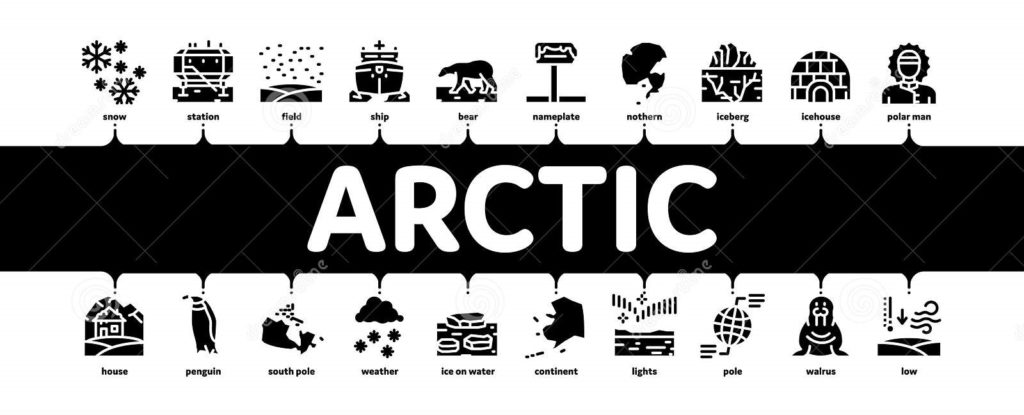India has asserted a comparatively greater significance in World geopolitics since last few decades. It has recognized its role in nearly every land and water sustaining on Earth.
Arctic region is another enormous area around the North Pole that is increasingly being associated by external global forces – environmental, commercial and strategic.
It covers over one-sixth of the earth’s landmass and is under extreme pressures created by the inhabitants of other continents. It may experience nearly ice-free summers as early as 2030 if we believe Climate Experts.
Now this may open opportunities in the form of alternate waterway but this may trigger a mess around the World with increasing temperatures to rising sea levels. Arctic oil and gas is another attraction altogether.
Consequently, a cooperative arrangement for managing the Arctic region became necessary and led to the formation of Arctic Council.
Arctic Council is a high-level intergovernmental body that came into existence out of Ottawa declaration in 1996. It consists of eight circumpolar countries (Norway, Sweden, Finland, Iceland, Denmark (Greenland and Faroe Islands), Canada, US and Russia).
India enjoys “observer” status in Arctic Council and been associated with the Arctic since the Svalbard Treaty signed in Paris 1920.
India has been cautiously watching the developments in the region for scientific, environmental, commercial as well as strategic concerns.
India and its research work in Arctic:
India initiated its Arctic Research Program in 2007 with thrust on climate change in the circumpolar North. It concerns us deeply by the fact that any change in Arctic will render a subsequent change in the Indian ocean and subcontinent.
It aims to establish such a tele-connections by analyzing the sediment and ice core records from the Arctic glaciers and the Arctic Ocean.
A comprehensive assessment of the flora and fauna in the Artic is also undertaken vis-à-vis their response to anthropogenic activities.
A permanent research station in the Arctic called Himadari has been established by India at NyAlesund, Svalbard Area in Norway in 2007 for studying intensive disciplines like Glaciology, Atmospheric sciences & Biological sciences.
Other achievements and establishments in Arctic by India:
The Indian researches have been coordinated and promoted by the National Centre for Polar and Ocean Research (NCPOR) Goa, under the Ministry of Earth Sciences, Government of India.
In 2012, India got elected to the Council of the International Arctic Science Committee (IASC) and a multi-sensor moored observatory called IndARC has been established in the Kongsfjorden fjord since July 2014 for aiding Climate studies and collected the date for a year.
IndARC-2 was again deployed with additional sensors to measure fluorescence, photosynthetically active radiation, nitrate and ambient noise.
India’s love for arctic is beyond borders:
At the domestic level, India has framed a draft Arctic Policy for Sustainable Engagement based on five pillars: science and research activities, economic and human development cooperation, transportation and connectivity, governance and international cooperation, and national capacity building.
India even has its footprints in Sustained Arctic Observational Network (SAON) as well as NISAR (NASA-ISRO Synthetic Aperture Radar) satellite mission that helps in measuring and recording the land surface changes using advanced radar imaging.
NISAR, an Indo-US experiment will aim to deal with our natural resources, Earth’s crustal modifications as well as estimating the pace and impacts of Climate change.
3rd Arctic Science Ministerial and India’s presence:
India has recently recorded its Midas Touch to the very first Arctic summit to be hosted in Asia (by the courtesy of Japan and Iceland) and third in line with this year’s theme as ‘Knowledge for a Sustainable Arctic’.
The last ministerial happened in 2018 where the Arctic ecosystem changes were evident as the Arctic is warming at a rate of nearly double the global average.
It establishes the importance of coming together under Climate consensus, develop and strengthen Arctic research cooperation. Scientific progress on Earth depends on a healthy, multi-generational scientific community with all best minds pouring knowledge and insight.
Indeed, a great thing about ASM3 is the demand of inputs and collaboration with Arctic indigenous and local communities, acknowledging their needs and providing opportunities for an inclusive discussion.
The impact of changes in the Arctic goes beyond these littoral states and spill across land and waters. Therefore, it requires an active participation of all those actors who have a stake in the governance of global commons.
A healthy integration of science and policy has the potential to handle the most complex issues with ease, be it the Arctic conundrum.
India as a friend to all, a beautiful democracy has a constructive role to play and therefore contribute to a safe, stable and secure Arctic for the Humanity.

